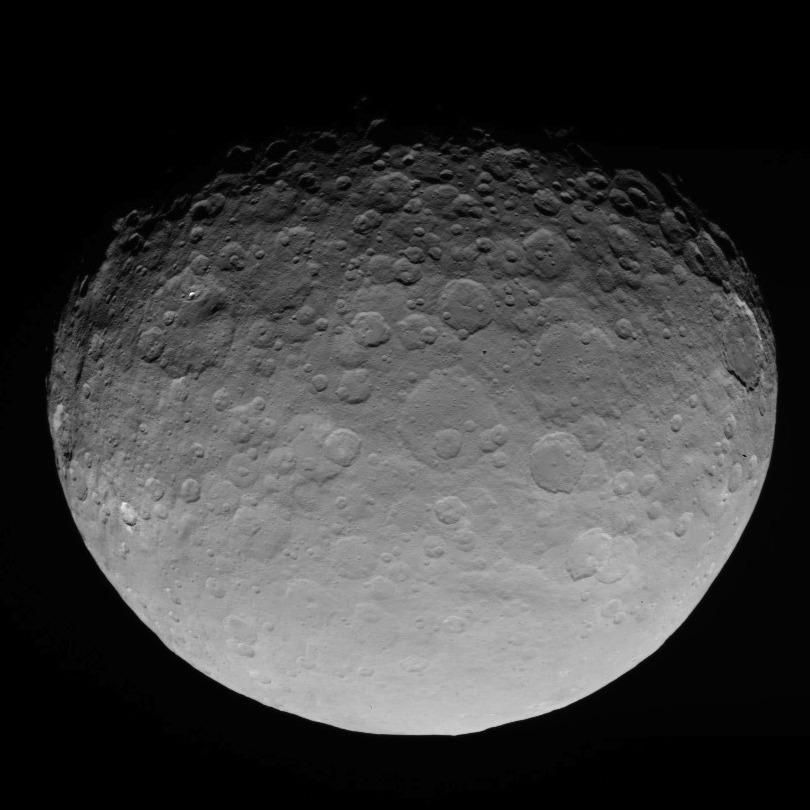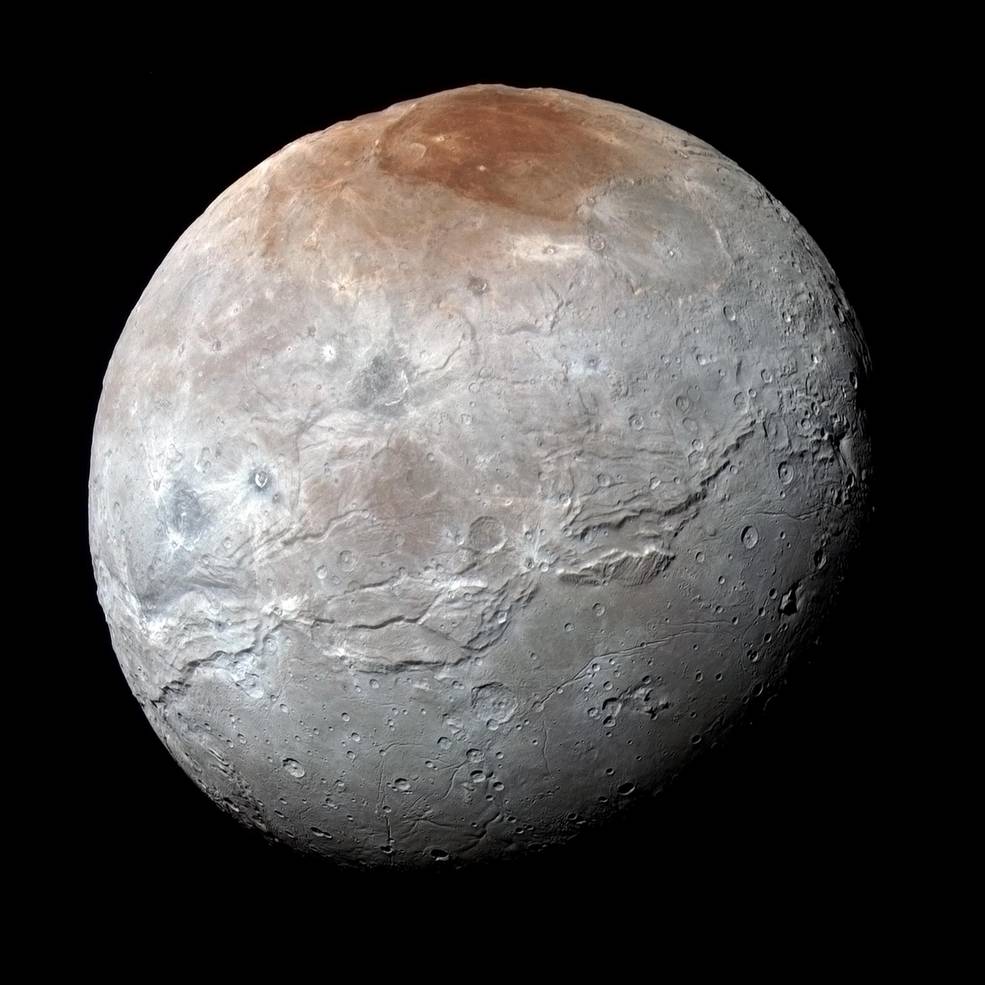Graphite Found at Pluto Moon Charon and Dwarf Planet Ceres

The gray surfaces of the dwarf planet Ceres (the asteroid belt's largest resident) and Pluto's biggest moon, Charon, both show signs of containing forms of graphite, the material in pencil lead.
When NASA's Dawn spacecraft arrived at Ceres last year to embark on an orbital survey, it found a gray, icy world covered with debris left behind by impacts. Spectral observations of the object, which is both a dwarf planet and an asteroid, revealed evidence of a form of graphite called graphitized carbon on its surface, according to Amanda Hendrix, a senior scientist at the Planetary Science Institute in Arizona.
The dark carbon suggests that similar processes could change the colors of both worlds, though they're significantly different environments. [Photos: Dwarf Planet Ceres, the Solar System's Largest Asteroid]
Graphitized carbon forms when carbon is heated to high temperatures in the absence of oxygen.
Hendrix studies how carbon forms in the inner solar system. She presented the results of her ultraviolet examination of Ceres at the Lunar and Planetary Sciences Conference in The Woodlands, Texas, in March.
Throughout Ceres' history, carbon-filled meteorites and asteroids have crashed into the dwarf planet. The solar wind's charged particles have collided with the deposited carbon, repeatedly reprocessing it to release hydrogen and leaving behind a dull, gray graphitized carbon. The dark material has a low albedo, meaning it doesn't reflect a lot of light.
"It hasn't evolved to proper graphite," Hendrix told Space.com. But it's close.
Get the Space.com Newsletter
Breaking space news, the latest updates on rocket launches, skywatching events and more!
Similar carbon processing may occur on other objects in the asteroid belt, she said.
And earlier this year, scientists found that Mercury's surface has high levels of carbon, suggesting that it once boasted a graphite-rich crust.

A dull moon
The inner solar system isn't the only place to find a gray world. Only a few months after Dawn reached Ceres, NASA's New Horizons spacecraftflew by Pluto and revealed that the dwarf planet's largest moon, Charon, has a grayish appearance. That color could have been caused by graphite on the moon's surface, according to lab results presented at the conference by Dale Cruikshank, a planetary scientist at NASA's Ames Research Center.
The presence of graphite at Charon presents a puzzle because New Horizons didn't spot carbon on Charon, but it did so at Pluto.
Before New Horizons arrived at Pluto, scientists hypothesized that the dwarf planet shared its atmosphere with its largest moon, and observations made by the spacecraft seem to confirm it. So carbon may travel from Pluto over to Charon, New Horizons scientists have said..
But although it is mostly gray, Charon also boasts a bright-red spot at its pole.
Cruikshank performed several experiments to learn more about this unusual color combination. In dousing ices similar to those found on the dwarf planet with radiation, Cruikshank was able to produce a residual organic gunk known as tholin. The color of this substance — named in 1979 by Carl Sagan and his colleague Bishun Khare, who performed similar space-themed experiments that left behind tholin as a sticky residue — resembles the color of Charon's red spot, as well as the color of some features seen at Pluto.
In fact, tholin may be involved in both the gray and reddish hues at Charon.
"The neutral color of Charon is consistent with taking tholin material and irradiating it," Cruikshank said during his presentation. "You end up with graphite."
The reddish region at Charon's pole is likely a newer deposit, whereas the rest of the moon is covered with an older layer, Cruikshank said.
Hendrix called these results surprising. Radiation from the solar wind should be significantly weaker at Charon than it is at Ceres, because Charon lies, on average, about 10 times farther from the sun than Ceres does. If the moon's surface is covered with graphite, she said, "it likely formed a different way."
[Editor's Note: This article previously stated that Charon lies about three times farther from the sun than Ceres does. Charon is actually, on average, about ten times farther from the sun than Ceres is.]
Follow Nola Taylor Redd on Twitter @NolaTRedd Google+. Follow us at @Spacedotcom, Facebook or Google+. Originally published on Space.com.
Join our Space Forums to keep talking space on the latest missions, night sky and more! And if you have a news tip, correction or comment, let us know at: community@space.com.

Nola Taylor Tillman is a contributing writer for Space.com. She loves all things space and astronomy-related, and enjoys the opportunity to learn more. She has a Bachelor’s degree in English and Astrophysics from Agnes Scott college and served as an intern at Sky & Telescope magazine. In her free time, she homeschools her four children. Follow her on Twitter at @NolaTRedd









